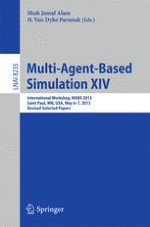This book constitutes the thoroughly refereed post-conference proceedings of the 14th International Workshop on Multi-Agent-Based Simulation, MABS 2013, held in Saint Paul, Minnesota, USA, in May 2013. The workshop was help in conjunction with Twelfth International Conference on Autonomous Agents and Multiagent Systems, AAMAS 2013. The 11 revised full papers included in this volume were carefully selected from 29 submissions. The papers are organized in topical sections on MABS for real-time and online data, formal approaches in MABS: design and validation, MABS in environmental modeling, simulating social phenomena.
